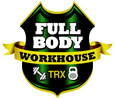Everyone wants to perform chin ups/pull ups, simple as that. People get a great buzz out of being able to conquer the chin up bar and it does give a sense of achievement when you perform one. Being able to pull your own body weight and be in control of your body gives you confidence when moving on to other lifts. Both males and females pride themselves on this movement but I am afraid women in general have a slight disadvantage and have to work harder to improve or even get their first chin up. Females tend to have a lot of strength in their lower body but lower levels of strength in their upper body. Due to their hormone levels, body fat tends to be slightly higher. This means their road to that first chin up usually takes a longer time than men.
0 Comments
Leave a Reply. |
AuthorCraig Connolly Archives
March 2020
Categories |

 RSS Feed
RSS Feed